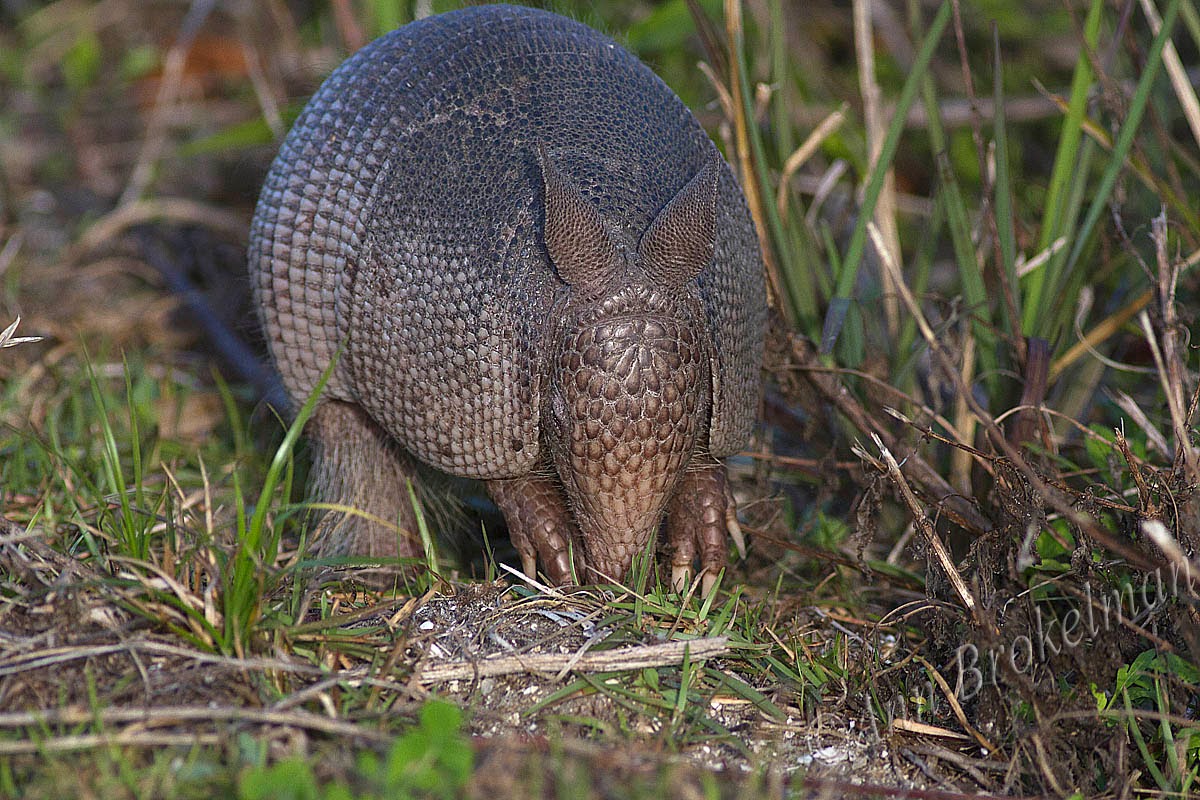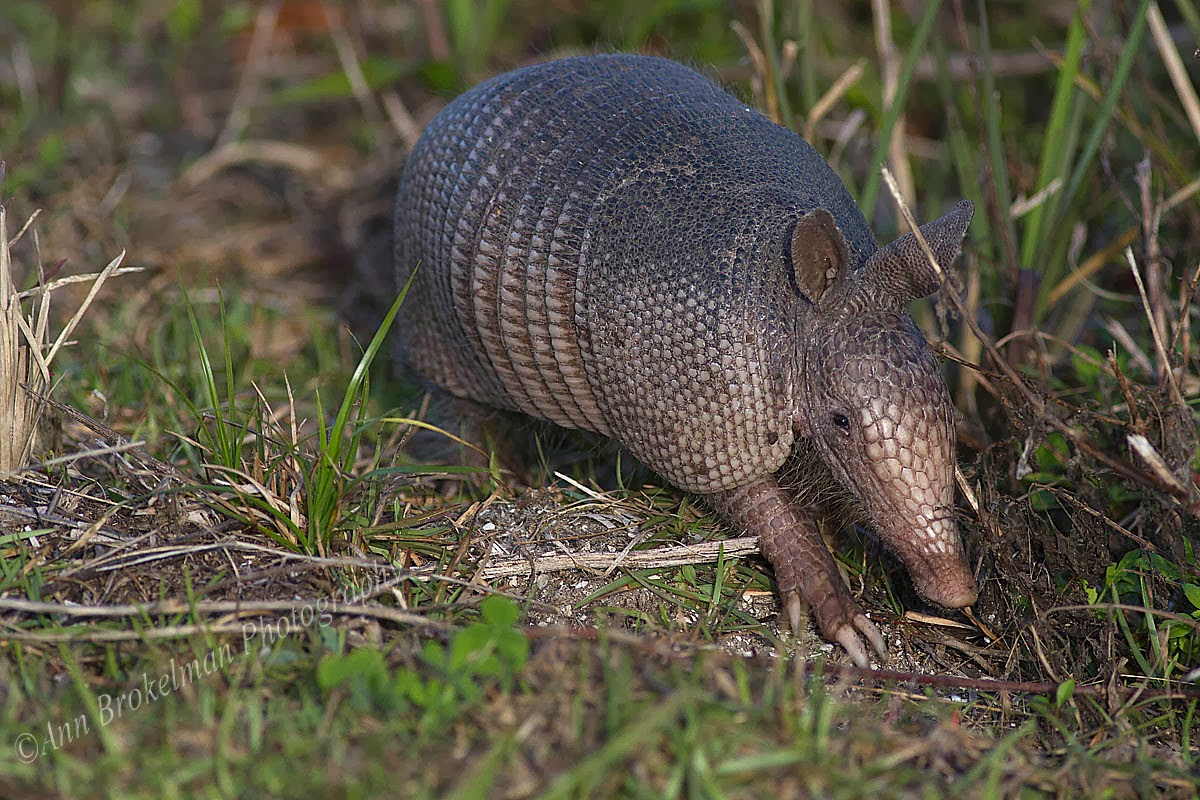
In addition to bugs, armadillos eat small vertebrates, plants, and some fruit, as well as the occassional carrion meal. Around the 1970s the separate populations met and merged in the Florida panhandle.

Strong legs and huge front claws are used for digging, and long, sticky tongues for extracting ants and termites from their tunnels. Their unintentional liberation started a Florida group. theres no mistaking an armadillo for anything else Except for a ball. They have very poor eyesight, and utilize their keen sense of smell to hunt. These Armadillo fossils and Glyptodont fossils are unusual shelled mammals which migrated from South & Central America to Florida during the Pliocene. Nine-Banded Armadillo Dasypus novemcinctus. Most species dig burrows and sleep prolifically, up to 16 hours per day, foraging in the early morning and evening for beetles, ants, termites, and other insects. Because of their low metabolic rate and lack of fat stores, cold is their enemy, and spates of intemperate weather can wipe out whole populations. Habitat and DietĪrmadillos live in temperate and warm habitats, including rain forests, grasslands, and semi-deserts. In fact, only the three-banded armadillo can, curling its head and back feet and contorting its shell into a hard ball that confounds would-be predators. Others have black, red, gray, or yellowish coloring.Ĭontrary to popular belief, not all armadillos are able to encase themselves in their shells.

They vary widely in size and color, from the 6-inch-long, salmon-colored pink fairy armadillo to the 5-foot-long, dark-brown giant armadillo.

Armadillos are the only living mammals that wear such shells.Ĭlosely related to anteaters and sloths, armadillos generally have a pointy or shovel-shaped snout and small eyes. The familiar nine-banded armadillo is the only species that includes the United States in its range.Īrmadillo is a Spanish word meaning “little armored one” and refers to the bony plates that cover the back, head, legs, and tail of most of these odd looking creatures. Of the 20 varieties of armadillo, all but one live in Latin America.


 0 kommentar(er)
0 kommentar(er)
